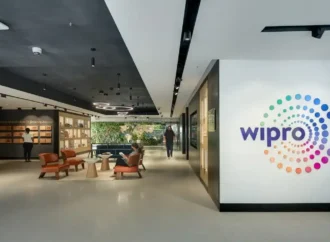The pivotal role of UI/UX design in the real estate market focuses on streamlining property searches, enhancing user engagement, and simplifying complex processes. With mobile optimisation and transparency as key factors, UI/UX design has become a crucial tool for real estate platforms to boost user satisfaction and build trust.
In today’s digital environment, the terms UI (User Interface) and UX (User Experience) are frequently discussed, especially in industries that rely on online platforms. UI refers to the visual elements that users interact with, such as buttons, layouts, and images, while UX focuses on users’ overall experience when navigating these interfaces. A well-designed UI offers visually appealing and easy-to-use elements, and an effective UX ensures that users can achieve their goals with minimal frustration.
In the real estate sector, where competition is strong, and user expectations are increasingly demanding, UI/UX design has emerged as a critical element in the success of online property platforms. As many individuals rely on digital solutions to search for homes, offices, or investment opportunities, real estate businesses must prioritize delivering seamless, efficient, and user-friendly online experiences. This article examines how well-executed UI/UX design can enhance the real estate market, making it more accessible and engaging for buyers and renters.
Streamlining the Search Process
The first step in any property search is finding listings that match the user’s requirements, location, price, or property type. A clear, intuitive UI/UX design simplifies this process, allowing users to quickly filter and sort through countless options without feeling overwhelmed.
For example, well-designed platforms offer advanced search functions that let users set specific criteria such as budget range, desired neighbourhood, or preferred amenities. The search results are displayed visually clean, easy-to-navigate format, ensuring users can focus on finding the right property. By streamlining the search process, UI/UX design saves time and helps users feel more in control, improving their overall satisfaction.
On a business level, a user-friendly search process keeps potential buyers or renters on the platform longer, increasing the chances of successful transactions. Platforms that offer effortless navigation foster trust and loyalty, encouraging repeat visits and positive word-of-mouth recommendations.
Enhancing Visual Appeal and User Engagement
In real estate, first impressions matter. How a property is presented online can significantly impact a buyer’s or renter’s decision. High-quality visuals—such as images, videos, and virtual tours—often decide whether a user chooses to explore a listing further. UI/UX design plays a key role in enhancing the presentation of these visual elements.
An effective UI/UX design ensures that images load quickly, are displayed in high resolution, and can be easily zoomed or rotated for better viewing. Virtual tours, which allow users to walk through properties from the comfort of their homes, have become a critical feature in modern real estate platforms. These tours and interactive maps showing nearby amenities offer users a complete picture of the property and its surroundings.
Beyond just showcasing visuals, the platform’s layout must be visually appealing. A well-structured and aesthetically pleasing platform invites users to explore more properties and engage with the content. A thoughtfully designed interface also places important elements—such as contact information, pricing, or scheduling tools—where they are easily accessible, guiding users toward taking action.
Optimising for Mobile Users
As mobile device usage continues to grow, mobile optimisation is no longer optional for real estate platforms—it’s essential. Many users now browse properties on their smartphones or tablets, whether at home, commuting, or multitasking. A real estate platform must be fully responsive, ensuring seamless user experience across different devices.
UI/UX designers must account for mobile devices’ smaller screens and touch-based interactions. This involves designing mobile-friendly layouts with simplified navigation, readable fonts, and touch-optimized buttons. For example, property images should be easily expandable with pinch-to-zoom features, and users should be able to scroll through listings without encountering delays or glitches.
Ensuring fast loading times on mobile devices is equally critical. Users tend to abandon platforms that take too long to load, so a smooth, quick-loading mobile experience is key to retaining potential buyers and renters.
Simplifying Complex Processes
Real estate transactions often involve several steps, which can be complicated and time-consuming for users. From scheduling viewings to submitting rental applications or signing purchase agreements, there are many points where users may feel overwhelmed. Here is where UI/UX design becomes invaluable—breaking down complex processes into manageable tasks and providing users with clear guidance at every stage.
A well-structured user experience ensures that each step, such as filling out forms or uploading documents, is simple and intuitive. For instance, progress indicators or tooltips can guide users through a lengthy form-filling process, reducing the chances of mistakes or incomplete submissions. Similarly, automated reminders and confirmations can help users stay on top of tasks like scheduling viewings or sending in required documents.
By simplifying these processes, UI/UX design significantly reduces friction, making users more likely to complete their transactions. A well-designed interface can differ between a user abandoning a platform out of frustration or successfully finalising a property deal.
Building Trust Through Transparency
Trust is a key factor in real estate, where high-value transactions are at stake. A strong UI/UX design promotes transparency by ensuring critical information is clearly presented and easily found. This might include accurate property descriptions, clear pricing details, and readily accessible contact information.
Incorporating user reviews, property ratings, and agent profiles also helps build credibility, as users can see feedback from others who have previously rented or bought properties through the platform. This added layer of social proof fosters trust, essential for users making significant financial decisions.
A platform with transparent, well-organized information allows users to feel confident and informed, reducing uncertainty and increasing their likelihood of completing a transaction.
Conclusion
As the real estate industry evolves in the digital age, focusing on user experience through strong UI/UX design will remain a key differentiator for platforms looking to stand out in a crowded market. By delivering intuitive, accessible, and engaging online experiences, real estate businesses can ensure they not only meet but exceed their users’ expectations.























